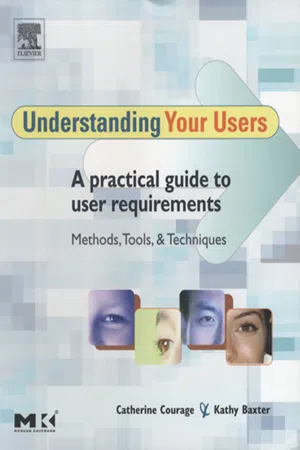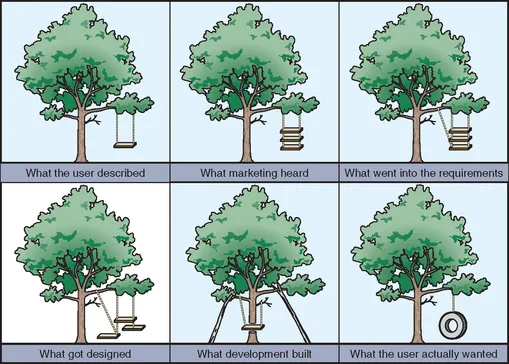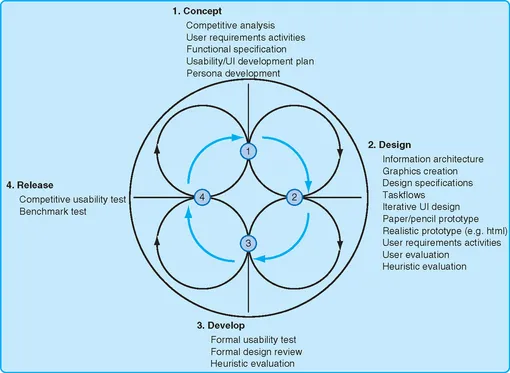
Understanding Your Users
A Practical Guide to User Requirements Methods, Tools, and Techniques
Kathy Baxter,Catherine Courage
- 704 pages
- English
- ePUB (mobile friendly)
- Available on iOS & Android
Understanding Your Users
A Practical Guide to User Requirements Methods, Tools, and Techniques
Kathy Baxter,Catherine Courage
About This Book
Today many companies are employing a user-centered design (UCD) process, but for most companies, usability begins and ends with the usability test. Although usability testing is a critical part of an effective user-centered life cycle, it is only one component of the UCD process. This book is focused on the requirements gathering stage, which often receives less attention than usability testing, but is equally as important. Understanding user requirements is critical to the development of a successful product. Understanding Your Users is an easy to read, easy to implement, how-to guide on usability in the real world. It focuses on the "user requirements gathering" stage of product development and it provides a variety of techniques, many of which may be new to usability professionals. For each technique, readers will learn how to prepare for and conduct the activity, as well as analyze and present the data —all in a practical and hands-on way. In addition, each method presented provides different information about the user and their requirements (e.g., functional requirements, information architecture, task flows). The techniques can be used together to form a complete picture of the users' requirements or they can be used separately to address specific product questions. These techniques have helped product teams understand the value of user requirements gathering by providing insight into how users work and what they need to be successful at their tasks. Case studies from industry-leading companies demonstrate each method in action. In addition, readers are provided with the foundation to conduct any usability activity (e.g., getting buy-in from management, legal and ethical considerations, setting up your facilities, recruiting, moderating activities) and to ensure the incorporation of the results into their products.·Covers all of the significant requirements gathering methods in a readable, practical way
·Presents the foundation readers need to prepare for any requirements gathering activity and ensure that the results are incorporated into their products
·Includes invaluable worksheet and template appendices
·Includes a case study for each method from industry leaders
·Written by experienced authors who teach conference courses on this subject to usability professionals and new product designers alike
Frequently asked questions
Information
INTRODUCTION TO USER REQUIREMENTS
Introduction
User-centered Design
Principles of User-centered Design
An Early Focus on Users and Tasks
Empirical Measurement of Product Usage

Iterative Design
Incorporating User-centered Design Principles into the Product Lifecycle

Stage 1: Concept
